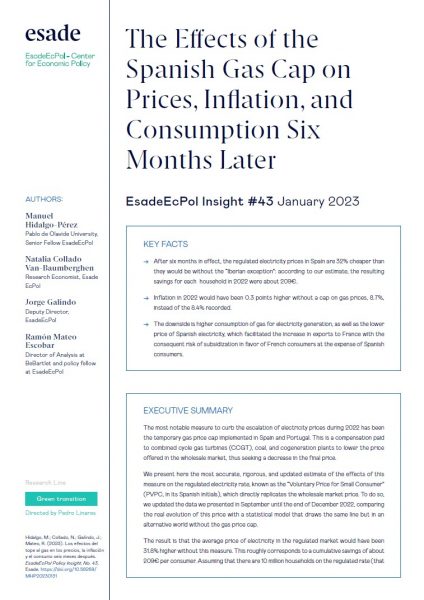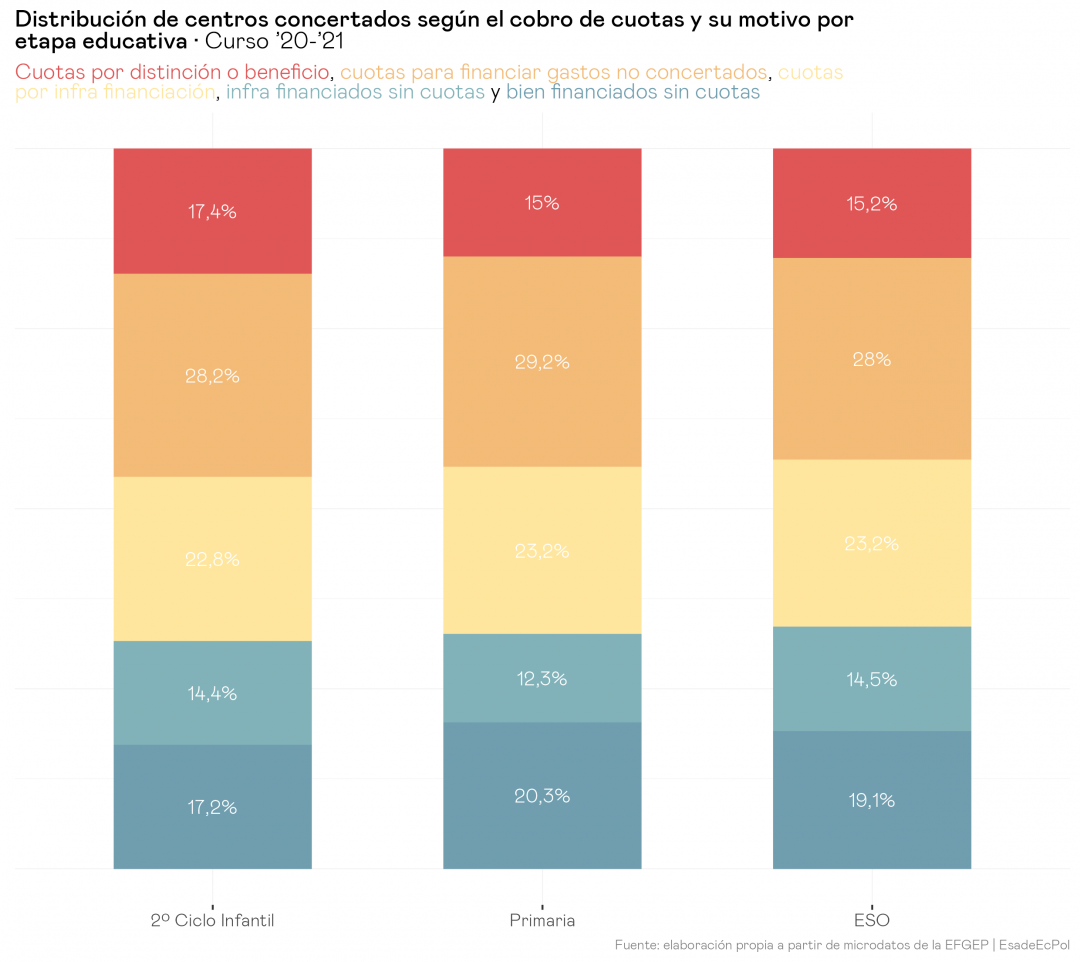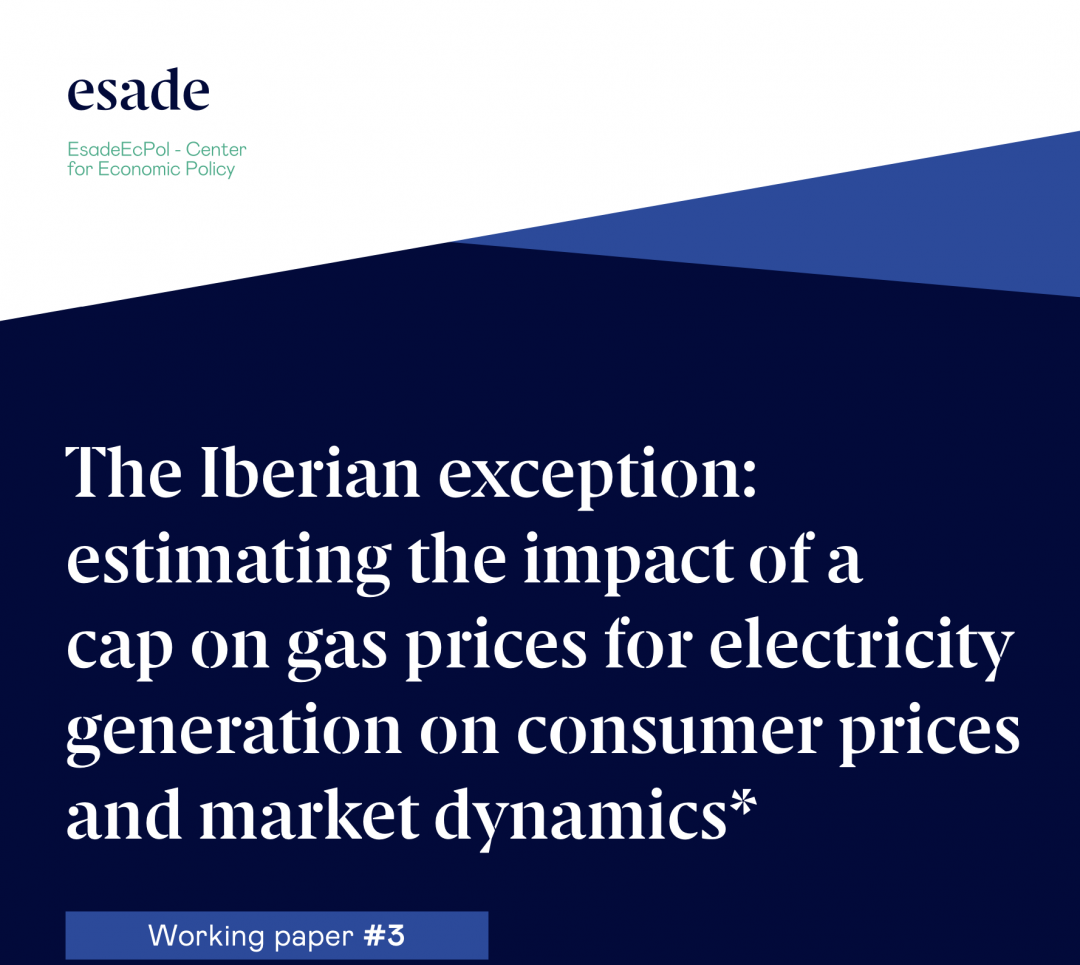
The Effects of the Spanish Gas Cap on Prices, Inflation, and Consumption Six Months Later
Manuel Hidalgo Pérez, Natalia Collado Van-Baumberghen, Jorge Galindo, Ramón Mateo Escobar
2 Feb, 2023
The most notable measure to curb the escalation of electricity prices during 2022 has been the temporary gas price cap implemented in Spain and Portugal. This is a compensation paid to combined cycle gas turbines (CCGT), coal, and cogeneration plants to lower the price offered in the wholesale market, thus seeking a decrease in the final price.
We present here the most accurate, rigorous, and updated estimate of the effects of this measure on the regulated electricity rate, known as the “Voluntary Price for Small Consumer” (PVPC, in its Spanish initials), which directly replicates the wholesale market price. To do so, we updated the data we presented in September until the end of December 2022, comparing the real evolution of this price with a statistical model that draws the same line but in an alternative world without the gas price cap.
The result is that the average price of electricity in the regulated market would have been 31.8% higher without this measure. This roughly corresponds to a cumulative savings of about 209€ per consumer. Assuming that there are 10 million households on the regulated rate (that was the figure for January 2022), this would mean total savings of almost 2.1 billion euros for all consumers with the regulated rate at the end of 2022. Assuming 9 million households (the figure for August 2022), savings would be slightly below 1.9 billion.
As a result of this lower price, we estimate that year-on-year inflation in 2022 was 0.3 points lower: Spain would have closed at 8.7% instead of 8.4%.
However, during 2022 the higher consumption of gas for electricity generation in combined cycle power (CCGT) plants has continued, indicating that the incentive for greater use of this energy source would continue to exist, with the consequent conflict between the objective of savings in household bills and the overall savings in gas consumption for the Spanish and European economy.
It appears, though, that the daily use of gas for CCGT plants is closer (but not quite equal) to what would have been expected without a gas price cap during the last few months of the year. In other words, the largest increase was in the summer months, suggesting that the unavailability of sources such as hydroelectric power due to the drought during those months may have influenced the extra reliance on gas.
Finally, our estimate indicates that, without the mechanism, the Spanish price would have been slightly higher than the French price at almost all times since mid-September. This suggests that the high energy export during 2022 could indeed be partly due to the lower electricity price in Spain thanks to the compensation paid by Spanish households.
Cite this content as:
Hidalgo, M.; Collado, N.; Galindo, J.; Mateo, R. (2023). The Effects of the Spanish Gas Cap on Prices, Inflation, and Consumption Six Months Later. EsadeEcPol Policy Insight, No. 43, Esade. https://doi.org/10.56269/20230202/mhp


Research Economist en EsadeEcPol. Máster en Economía Industrial y Mercados regulados por la Universidad Carlos III de Madrid
View profile




